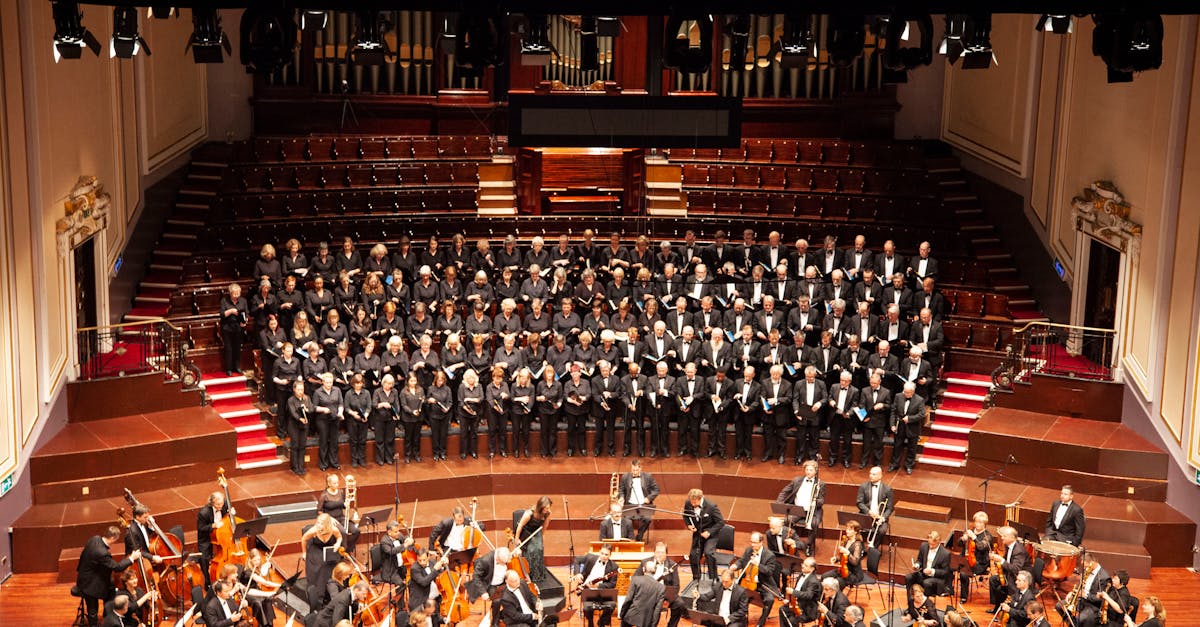Global Rhythms Embracing Music Without Borders
Introduction
In today's interconnected world, music serves as a universal language transcending borders and bridging cultures. Global rhythms, a vibrant blend of traditional and modern music from diverse cultures, captivate audiences worldwide. This harmonious fusion highlights the richness of musical diversity, offering listeners a kaleidoscope of sounds and influences. New technological advancements have further enabled musicians to share and collaborate beyond geographical confines, creating a truly global tapestry of sound. With roots drawing from indigenous, classical, and contemporary styles, global rhythms invite us to embrace and celebrate our shared humanity. Understanding and appreciating these musical influences yields insight into diverse cultural narratives.
Advertisement
The Evolution of Global Rhythms
Global rhythms have undergone a fascinating evolution, drawing from centuries-old traditions and modern influences. Historically, trade routes, migrations, and colonization facilitated the exchange of musical ideas across continents. Instruments like the djembe from Africa, sitar from India, and maracas from Latin America became cultural ambassadors, reaching audiences far from their origin. During the 20th century, technological advancements in recording and broadcasting further propelled this exchange, giving rise to new genres like jazz, reggae, and bossa nova. The digital age has expanded this global dialogue considerably, with online platforms enabling musicians to collaborate and innovate without physical boundaries.
Advertisement
Cultural Fusion and Identity
Music serves as a powerful medium for cultural expression and identity, allowing artists to convey their heritage and personal narratives. By blending styles, artists create unique sounds reflective of their multicultural backgrounds, promoting inclusivity and mutual respect. For instance, Afrobeat fuses West African rhythms with jazz, funk, and soul, while K-pop incorporates elements from hip-hop, R&B, and electronic music. These hybrid genres illustrate how music can celebrate diversity and synthesis, encouraging listeners to appreciate different cultures through a shared auditory experience. Ultimately, such creativity reinforces the notion that cultural identity is fluid and enriched by global influences.
Advertisement
Technology's Role in Music Exchange
Modern technology has been instrumental in advancing the exchange and evolution of global rhythms. Online platforms like Spotify, YouTube, and Zoom connect artists, producers, and fans worldwide, offering unprecedented access to diverse musical expressions. Virtual collaborations have become more prevalent, with artists seamlessly working together across continents, blending various styles and influences. Furthermore, social media acts as a powerful tool for artists to share their sounds with a global audience, building communities based on mutual appreciation for diverse rhythms. As technology continues to evolve, the possibilities for musical exchange and innovation are limitless.
Advertisement
Global Music Festivals and Cultural Appreciation
Music festivals celebrating global rhythms have emerged as vibrant platforms for cultural exploration and appreciation. Events like WOMAD (World of Music, Arts, and Dance), Glastonbury, and Coachella feature a diverse lineup of artists from around the world, showcasing their unique sounds to enthusiastic crowds. These festivals provide a space for artists to connect with new audiences, while attendees engage with new cultures through music, dance, and culinary experiences. By fostering cross-cultural understanding, global music festivals help dissolve barriers, fostering a sense of unity and shared human experience through the universal language of music.
Advertisement
The Influence of Globalization on Music
With globalization, the influence of global music has permeated mainstream media and popular culture. International music collaborations have led to chart-topping hits that blend styles from different corners of the world. Global superstars such as Shakira, BTS, and Burna Boy command international attention, introducing diverse musical styles to millions of fans across languages and borders. This seamless integration of world influences often makes the unfamiliar, familiar, paving the way for acceptance and appreciation of cultural novelties. As musical boundaries become increasingly porous, audiences grow more receptive to music that reflects a global narrative.
Advertisement
Educational Impacts of Global Rhythms
Global rhythms have transformative educational value, broadening students' understanding of world cultures and history. Music programs incorporating world music perspectives provide an enriching learning experience, nurturing curiosity and empathy in young minds. Teachers use music as a tool to introduce students to cultural celebrations, traditional instruments, and historical contexts, fostering awareness and an appreciation for the past and present. These programs encourage students to challenge stereotypes and embrace cultural diversity, nurturing a future generation that values inclusivity and intercultural collaboration.
Advertisement
Challenges in Global Music Integration
Despite the positive impact of global rhythms, challenges remain in ensuring respect and authenticity in multicultural exchanges. Concerns about cultural appropriation surface when elements from one culture appear in another without due acknowledgment or understanding. It is important for artists to engage with and learn from the cultures they draw inspiration from, maintaining a balance between innovation and respect for cultural origins. Furthermore, ensuring equal representation and opportunities for artists from developing regions in the global music industry remains a pressing issue. Navigating these challenges with sensitivity and openness ensures a sustainable future for global musical exchanges.
Advertisement
The Future of Global Rhythms
The future of global rhythms lies in the continuous blending and innovation spurred by technological advancement and cultural dialogues. As the world becomes increasingly interconnected, artists will further explore uncharted territories, experimenting with various sounds to create groundbreaking fusions. Future developments in virtual reality and augmented reality might allow audiences to participate in immersive music experiences, bridging physical distances. Moreover, collaboration between artists, educators, policymakers, and tech companies will ensure equitable access to resources and global platforms for all voices. The dynamic interplay of tradition and innovation will drive the evolution of global rhythms for generations to come, enriching our shared cultural tapestry.
Advertisement
Conclusion: Embracing Music Without Borders
Global rhythms offer a powerful medium to unite diverse cultures, transcending geographical confines and inviting us to embrace our shared humanity. They reveal the potential for cross-cultural collaboration and mutual understanding, fostering an environment of acceptance and inclusivity. As technology and globalization continue to reshape the musical landscape, the exploration of global rhythms will offer countless opportunities for artists and audiences alike. By valuing and respecting the contributions of varied musical traditions, we can create a harmonious future where diversity is celebrated. Ultimately, music stands as a vessel for cultural connection, ushering in a world united in its love for rhythm and melody.
Advertisement







